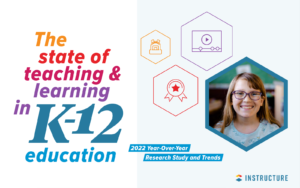Funding Students, Options & Achievement

By Carri Schneider & Tom Vander Ark
Money matters. The way districts and states fund schools influences leadership behaviors. We need to create funding systems that encourage innovation, power options, and promote achievement.
When Tom became a public school superintendent almost twenty years ago (after being the finance guy at a $5 billion retail chain), he was greeted by a funding system focused on inputs and state and federal programs. It left almost no discretion for school leadership, and it promoted inequity despite nominal efforts to the contrary. The budgets were indecipherable. Very little has changed for the majority of superintendents–their districts are funded by a collection policies that are the sedimentary residue of decades of politics. It’s time for a total makeover based on the emerging opportunities of digital learning.
Today with John Bailey we released a Smart Series paper called Funding Students, Options & Achievement. It addresses these archaic layers of funding policy and calls for a full redesign that reorients the system around students to empower their access to the best in teaching and learning.
“The extent to which each student will be able to access innovations like digital learning will depend largely on the manner in which public resources are allocated to schools and students,” said Marguerite Roza, school funding expert and technical advisor on the paper. “As state leaders re-examine their finance systems, the current moment provides a key opportunity to look forward and design a system that’s suitable for our students over the next two decades.”
Today’s current system was simply not designed to allow for the flexibility that will be needed as students seek out increasingly online and blended learning opportunities. The paper and accompanying infographic Financing the Future of Education recommend four design principles that will get us there.
A student-centered school finance system should be:
- Weighted. Funding should reflect individual student needs by attaching “weights” to student funding amounts based on factors that affect the cost of educating certain students, such as poverty, special needs, ELL/LEP, or gifted.
- Flexible. A flexible finance system does not restrict funds or designate them for particular uses such as salaries, and thus creates greater school-level autonomy.
- Portable. The principle of portability ensures that dollars can follow students to the school or course that best suits their individual needs – including fractional funding for full-time or part-time options.
- Performance-based. To ensure quality, a performance-based system creates incentives tied to student outcomes that reward performance and completion. Options include attaching a portion of provider payment and/ or eligibility to student achievement data.
The current system erects such a big barrier to universal student access to a growing slate of educational innovations that can personalize learning and boost achievement. To address these policy barriers, we offer policy recommendations that build on Fordham’s 10 recommendations in the landmark Fund the Child report. The paper includes the student-centered design principles, state and local examples of existing policies, and recommendations to guide policymakers. All that’s needed now is the commitment to designing the new system with students at the core.
The answer is to sunset existing policies in 2015 and two take years to completely rewrite the education code to make funding weighted, flexible, portable, and performance-based.








Funderstanding
Hi Tom,
I understand and agree with the logic of your article. A student-centered school finance system will facilitate the digital learning experience for students.
However, a student-centered school finance system for let's say, an inner-city school may sound great on paper, but financially unfeasible. I think a growing emphasis on the financial inequality between schools must be addressed. For instance, schools that have access to high-tech learning equipment for science and mathematics education may SEEM to be able to give a higher quality of education to their students. BUT low-cost, low-tech learning materials have been trending and diminishing the financial inequality between well-off schools and financially-constraint schools.
What I am saying is that, finances can not be the SOLE crux to which school administrations can lean on to explain why their quality of education is not as good as others. There are innovative ways to provide high quality education through cost-effective ways.
Thanks.
Replies
Tom Vander Ark
see finance paper we released this week, it suggests four design principles starting with weighted funding that reflects the risk factors that kids bring to school